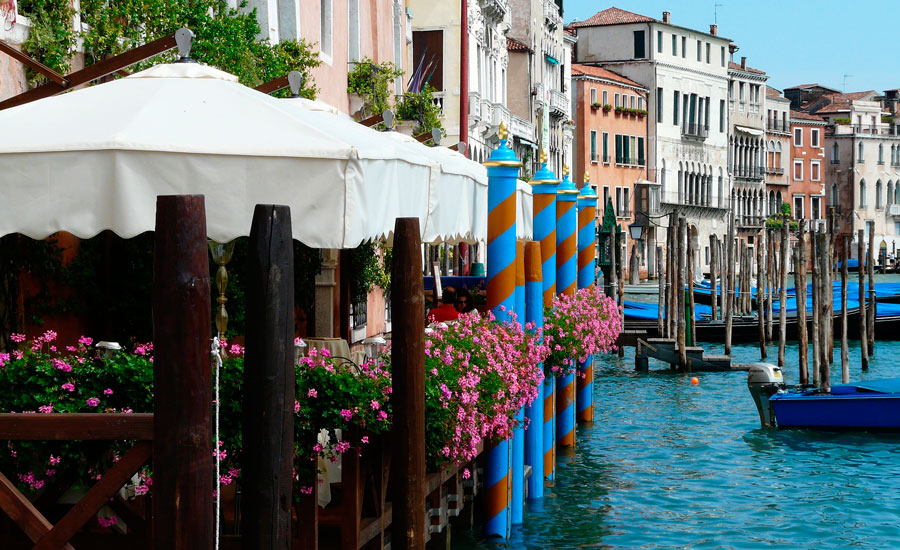The most famous part of Venice, Piazza San Marco, is the only square in the city centre that is called “piazza”: the other squares are in fact called “campi” or “campielli”, meaning small squares. The campiello is a sort of small square which often lacks the main feature of Venetian squares: a well.
The Basilica of San Marco is located in the centre of the square, coloured gold and covered with mosaics that tell the history of Venice. In front of the Palazzo Ducale is the San Marco bell tower built in 1173 as a beacon for sailors.
Other important Venetian monuments are the Arsenal, the basilica of Santa Maria della Salute, the basilica of Santa Maria gloriosa dei Frari, the synagogues of the Ghetto and San Pietro di Castello.
The main canal that runs through the city, the Grand Canal is crossed by four bridges: the Rialto bridge is the oldest (built around the sixteenth century); the Accademia Bridge; the Scalzi Bridge, and the bridge of the Constitution built in 2008 by the architect Santiago Calatrava.
Venice is also home to the cherished Peggy Guggenheim Museum, where there are great works of artists such as Modigliani, Picasso, Mirò, Pollock and Kandinsky.
But Venice is not just art and history. It is also fun, atmosphere, good drink and good food.
The bacaro or bacaréto, is a type of small Venetian tavern, where you can taste wines by the glass (called ombre or bianchetti) and snacks (so-called cichéti). Besides wine, bacari also serve snacks such as creamed cod or sardines in sauce.
And how could you resist a scenic gondola ride through the canals? The word gondola comes from the Latin “cuncula” or shell: 11 metres long and weighing 600 kg, it is perfectly steered with just one oar by the gondolier.
NB: For a more comprehensive tour, you can ask for Qualified Guides.











